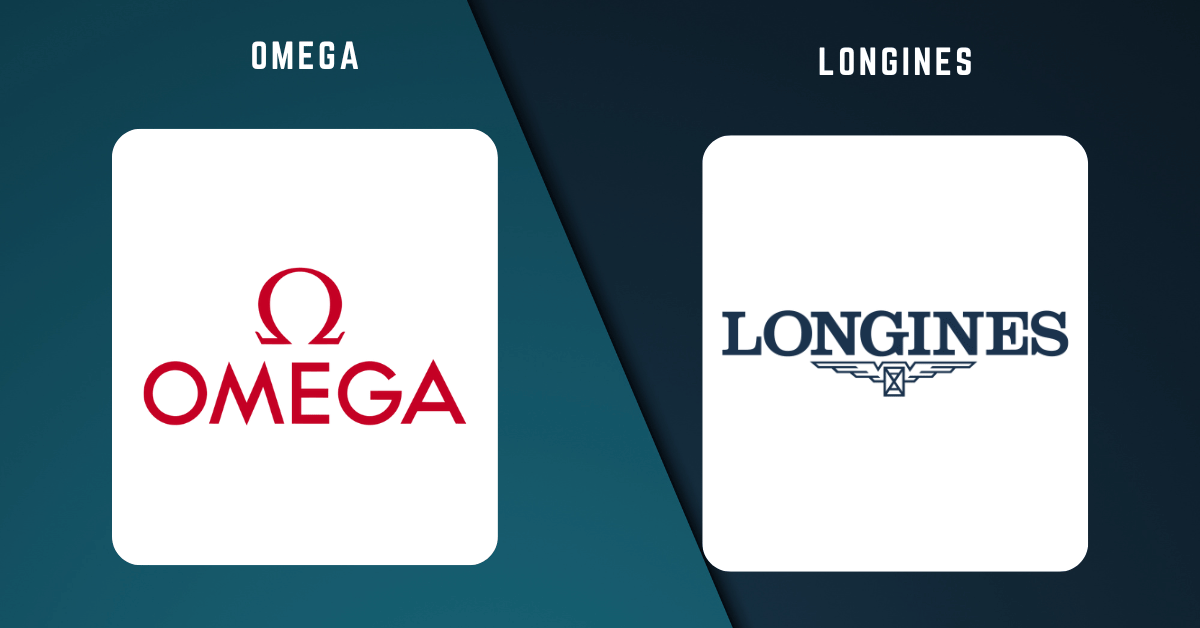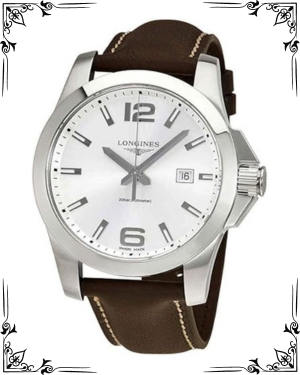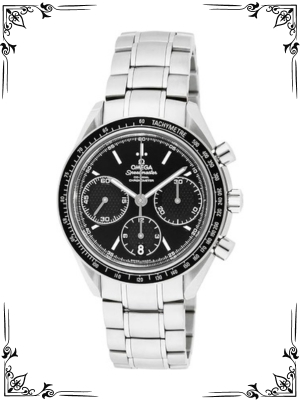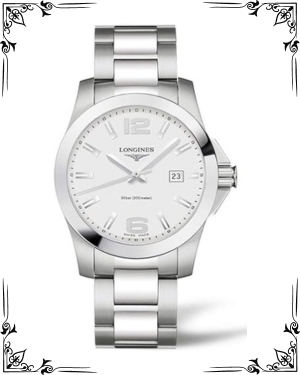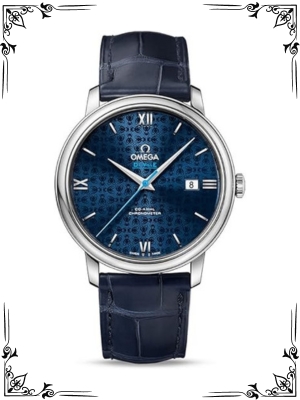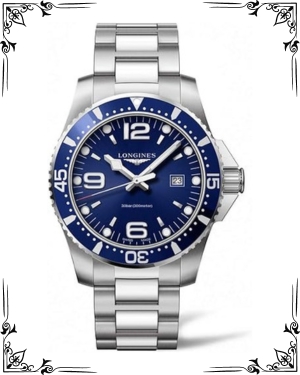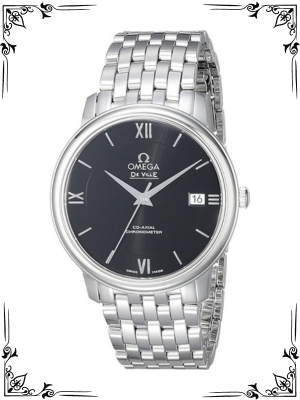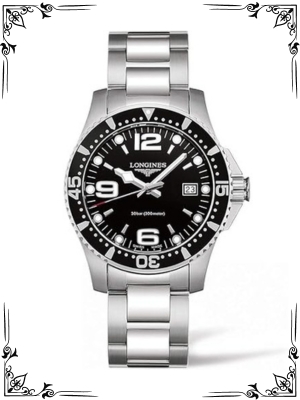Calling all watch enthusiasts! Today, we embark on a fascinating journey, comparing two distinguished Swiss watchmakers – the innovative Omega and the heritage-rich Longines. Both brands boast a long history, impressive craftsmanship, and a dedicated following.
But with a vast array of timepieces to consider, how do you decide which brand best suits your taste and needs? Fear not, intrepid watch aficionado! This in-depth exploration will equip you with the knowledge to navigate the world of Omega and Longines, empowering you to select the perfect timepiece for your wrist.
A Look Back at Omega and Longines’ History
Before we delve into the technical specifications, let’s explore the unique stories these brands bring to the table:
Omega: Established in 1848 in Switzerland, Omega has a long and distinguished history. They’ve consistently pushed boundaries in watchmaking technology, earning a reputation for innovation and precision. Omega’s most iconic achievement?
Becoming the first watch on the moon in 1969 with the legendary Speedmaster Professional. From their involvement in space exploration to their association with James Bond, Omega timepieces have become synonymous with adventure, luxury, and cutting-edge technology.
Longines: Founded in 1832 in Switzerland, Longines boasts an even older heritage, making them one of the world’s oldest watchmaking brands. They’ve established a reputation for elegant designs, reliable movements, and exceptional value.
Longines have played a pivotal role in sports timekeeping, particularly in equestrian sports, and their timepieces are known for their classic aesthetics and functionality.
Here’s a table summarizing the key historical aspects:
| Feature | Omega | Longines |
|---|---|---|
| Founding Year | 1848 | 1832 |
| Known For | Innovation, Moonwatch, Luxury Sports Watches | Heritage, Elegance, Value, Sports Timekeeping |
Under the Hood: A Technical Breakdown
Now, let’s delve into the technical specifications of Omega and Longines timepieces, equipping ourselves with the knowledge to make informed decisions:
Movement
Omega: Omega utilizes a variety of movements in their timepieces, ranging from reliable Swiss-made automatic movements like ETA or Sellita to in-house manufactured Master Chronometer calibers. The Master Chronometer certification signifies superior accuracy, resistance to magnetic fields, and a high level of performance.
The specific movement used depends on the Omega model, with some high-end Speedmaster and Seamaster models featuring the prestigious Master Chronometer calibers.
Longines: Longines primarily rely on Swiss-made automatic movements from established manufacturers like ETA or Sellita. These movements are known for their reliability, durability, and affordability, making Longines timepieces accessible to a wider audience.
While Longines doesn’t currently have its own line of in-house movements, the movements it utilizes are proven and trusted within the watch industry.
Here’s a table summarizing the key movement aspects:
| Feature | Omega | Longines |
|---|---|---|
| Movement Strategy | Swiss-made automatic (ETA/Sellita) & in-house calibers (Master Chronometer options) | Primarily Swiss-made automatic (ETA/Sellita) |
| Notable Feature (Omega) | Master Chronometer certification (superior accuracy, anti-magnetism) |
Materials and Construction
Both Omega and Longines prioritize high-quality materials in their construction. They predominantly utilize 316L stainless steel for their cases and bracelets, ensuring durability and corrosion resistance in various environments.
Some models from both brands might incorporate high-end materials like ceramic bezels, sapphire crystal with anti-reflective coating, or precious metals like gold or platinum for a more luxurious feel.
Both brands are known for their meticulous construction and water resistance. However, Omega tends to offer a wider range of water resistance ratings depending on the model. Omega Speedmaster Professional models boast a water resistance rating of 50 meters, which is suitable for everyday wear and light water activities.
Omega Seamaster models, particularly those geared towards professional divers, can offer water resistance ratings ranging from 300 meters to 600 meters (or even deeper). Longines generally offers water resistance ratings between 30 meters and 300 meters, catering to a variety of needs, from everyday wear to recreational swimming or diving.
Here’s a table summarizing the key materials and construction aspects:
| Feature | Omega | Longines |
|---|---|---|
| Case Material | Primarily 316L stainless steel (high-end options available) | Primarily 316L stainless steel (high-end options available) |
| Bracelet Material | Primarily 316L stainless steel (high-end options available) | Primarily 316L stainless steel (high-end options available) |
| Water Resistance (Professional Models) | 50 meters (Speedmaster Professional) | Up to 300 meters (varies by model) |
Functions and Features
Omega: Omega offers a diverse range of timepieces, catering to various needs and preferences. Their iconic Speedmaster line features chronographs, perfect for timing events, with the legendary Speedmaster Professional holding historical significance as the “Moonwatch.”
Omega Seamaster models cater to divers and water sports enthusiasts, offering exceptional water resistance and functionalities like diving bezels and helium escape valves. Omega also offers a variety of dress watches and sporty chronographs with additional features like date complications or GMT functions for displaying multiple time zones.
Longines: Longines focuses on creating elegant and functional timepieces. Their dress watches prioritize classic aesthetics and clean dials, ideal for formal occasions. The Longines HydroConquest line caters to divers and water sports enthusiasts with features like unidirectional bezels and good water resistance ratings.
Longines also offers sporty chronographs and heritage-inspired timepieces that pay homage to their long history. While their feature sets might not be as extensive as some Omega models, Longines timepieces offer a balance of functionality and classic design.
Here’s a table summarizing the key functions and features aspects:
| Feature | Omega | Longines |
|---|---|---|
| Focus | Diverse (chronographs, divers, dress watches) | Elegant & functional (dress watches, divers, sport chronographs) |
| Notable Feature (Omega) | Speedmaster Professional (“Moonwatch”) & Seamaster Professional (divers) | |
| Notable Feature (Longines) | Classic dress watches & HydroConquest line (divers) |
A Matter of Style: Design and Aesthetics
While both Omega and Longines are renowned for their quality timepieces, their design approaches cater to distinct preferences:
Dial Design
Omega: Omega dials come in a variety of styles depending on the model. The Speedmaster Professional features a black dial with white hands and subdials, offering a classic chronograph layout. Seamaster models often have a wave motif on the dials, reflecting their diving heritage.
Dress watches might incorporate Roman numerals and elegant hands. Omega offers a wider range of dial colors and styles to cater to diverse tastes.
Longines: Longines dials prioritize classic aesthetics and legibility. Dress watches often feature simple dials with clean indices or Roman numerals. Sporty models might incorporate bolder hands and luminous markers for better visibility in low-light conditions.
The HydroConquest line often features colorful dials with a focus on functionality for divers. Longines dials tend to be more conservative in design compared to Omega’s wider variety.
Here’s a table summarizing the key dial design aspects:
| Feature | Omega | Longines |
|---|---|---|
| Overall Aesthetic | Diverse (chronograph, diver, dress watch styles) | Classic and legible |
| Notable Feature (Omega) | Speedmaster Professional black dial & Seamaster wave motif | |
| Notable Feature (Longines) | Clean dials on dress watches & functional dials on sports models |
User Feedback: Voices from the Watch Community
Let’s delve into the real-world experiences of watch enthusiasts who own either Omega or Longines timepieces:
Omega: Owners often praise the prestige associated with the Omega brand, the historical significance of the Speedmaster, and the cutting-edge technology incorporated into some models with Master Chronometer calibers. The variety of styles offered caters to a wider range of preferences.
Some might find the price point of higher-end Omega models, particularly those with Master Chronometer movements, to be a barrier. The thicker profile of professional Speedmaster and Seamaster models might be less comfortable for those with smaller wrists.
Longines: Owners appreciate the excellent value proposition offered by Longines timepieces. The classic and elegant designs are ideal for everyday wear or formal occasions. The reliability of the Swiss-made automatic movements ensures long-lasting performance.
Some enthusiasts might find the feature sets of Longines timepieces to be less extensive compared to some Omega models, particularly for those seeking advanced functionalities like GMT complications or high water resistance ratings for professional diving.
The brand image of Longines, while respected, might not hold the same level of prestige associated with Omega, especially for those seeking a luxury timepiece.
Here’s a table summarizing the key user feedback aspects:
| Feature | Omega | Longines |
|---|---|---|
| Overall Feedback | Prestige, historical significance, variety of styles | Excellent value proposition, classic designs, reliable movements |
| Potential Drawbacks (Omega) | Price point (high-end models), thickness of professional models | Less extensive feature sets, brand image (less prestigious for some) |
| Potential Drawbacks (Longines) | Less extensive feature sets, brand image (less prestigious for some) | Price point (high-end models), thickness of professional models |
Common Problems: Potential Concerns
While both Omega and Longines are known for their quality, it’s wise to consider potential drawbacks:
Omega: The price point of high-end Omega models with Master Chronometer calibers can be a significant barrier for some watch enthusiasts. The thickness of professional Speedmaster and Seamaster models might be less comfortable for those with smaller wrists.
The manual-wound movement of the Speedmaster Professional requires regular winding to maintain accuracy (though this isn’t a concern for automatic models).
Longines: The feature sets of Longines timepieces might be less extensive compared to some Omega models, particularly for those seeking advanced functionalities. The brand image of Longines, while respected, might not hold the same level of prestige associated with Omega, especially for those seeking a luxury timepiece.
While Longines offers divers’ watches like the HydroConquest line, their water resistance ratings may not be as extreme as some professional Omega Seamaster models.
Here’s a table summarizing the key common problems aspects:
| Feature | Omega | Longines |
|---|---|---|
| Potential Drawbacks | Price point (high-end models), thickness of professional models, manual-wound movement (Speedmaster Professional) | Less extensive feature sets, brand image (less prestigious for some), water resistance ratings (not as extreme as some Omega divers’ models) |
Popular Models From Omega and Longines
Omega
Speedmaster Moonwatch Professional: This iconic chronograph became famous for being the first watch worn on the moon during the Apollo 11 mission. It features a black tachymeter bezel, manual winding chronograph movement, and a Hesalite crystal.
Seamaster Diver 300M: A popular choice for divers and watch enthusiasts alike, the Seamaster Diver 300M is a stylish and functional dive watch. It’s water-resistant to 300 meters and features a unidirectional rotating bezel, a helium escape valve, and a variety of dial colors and bracelet options.
Constellation Globemaster: A dress watch with a classic and elegant design, the Constellation Globemaster is perfect for everyday wear. It features a fluted bezel, a variety of dial colors and finishes, and a Master Chronometer certified movement.
Longines
Hydroconquest: The Longines Hydroconquest is a stylish and affordable dive watch that’s perfect for everyday wear. It’s water-resistant to 300 meters and features a unidirectional rotating bezel, a screw-down crown, and a variety of dial colors and bracelet options.
Spirit: The Longines Spirit is a collection of pilot’s watches inspired by vintage aviation timepieces. It features a variety of case sizes, dial colors, and movement options, including automatic and chronograph movements.
Master Collection: The Longines Master Collection is a collection of elegant dress watches that are perfect for everyday wear. It features a variety of case sizes, dial colors, and movement options, including automatic and quartz movements.
These are just a few of the many popular models from Omega and Longines. Both brands offer a wide variety of watches to suit different styles and budgets.
The Final Lap: Choosing Your Champion
With a comprehensive understanding of Omega and Longines, you’re well-equipped to make an informed decision:
Choose Omega if:
- You value prestige and the historical significance associated with the brand.
- You prioritize cutting-edge technology and advanced functionalities like Master Chronometer certification.
- You appreciate the variety of styles offered by Omega, from the iconic Speedmaster to the sophisticated Seamaster and dress watches.
- You are comfortable with the price point of high-end Omega models.
Choose Longines if:
- Value is a top priority and you seek a reliable timepiece without breaking the bank.
- You appreciate classic and elegant designs that complement both formal and casual wear.
- You prioritize the reliability of Swiss-made automatic movements.
- You are interested in a sporty timepiece like the HydroConquest for diving or water activities, or a dress watch for everyday wear.
- You are less concerned about the brand prestige and prioritize a timepiece with a rich heritage but a more accessible price point.
Conclusion: A Timepiece for Every Wrist
Ultimately, the choice between Omega and Longines boils down to your individual needs and preferences. Consider your:
- Budget: How much are you willing to invest in your timepiece?
- Style: Do you prefer a classic and elegant design, a sporty chronograph, or a versatile dress watch?
- Functionality: Do you need advanced features like high water resistance or a GMT complication?
- Brand Image: Does the prestige associated with a brand matter to you?
Remember, there’s no single “correct” choice. Both Omega and Longines are exceptional watchmakers offering distinct advantages. With the knowledge you’ve gained from this comprehensive guide, you can confidently choose the timepiece that perfectly complements your style and fulfills your needs. Happy watch hunting!
FAQs
Luxury for Less or Prestige Powerhouse?
This question cuts to the heart of Omega vs. Longines. Omega offers a more prestigious brand name and cutting-edge technology but at a higher price point. Longines provides excellent quality and classic designs at a more accessible price.
Which Brand is Better for Watch Enthusiasts?
Omega boasts innovations like the Co-Axial escapement, a high-tech feature coveted by watch enthusiasts. Longines offers solid movements and timeless designs, making them a great entry point into the luxury watch world.
Looking for a Specific Watch Type?
Both Omega and Longines offer divers, pilots, and dress watches. Omega’s Seamaster is iconic in the dive watch category, while Longines’ HydroConquest is a stylish and affordable alternative.
What About Resale Value?
Omega watches tend to hold their value better due to brand recognition and limited editions. Longines may see a smaller value increase upon resale.
Ultimately, Which Brand is Right for Me?
Consider your budget, and desired features, and watch collecting goals. Omega offers a prestigious and technically advanced experience, while Longines provides excellent value and classic elegance.

